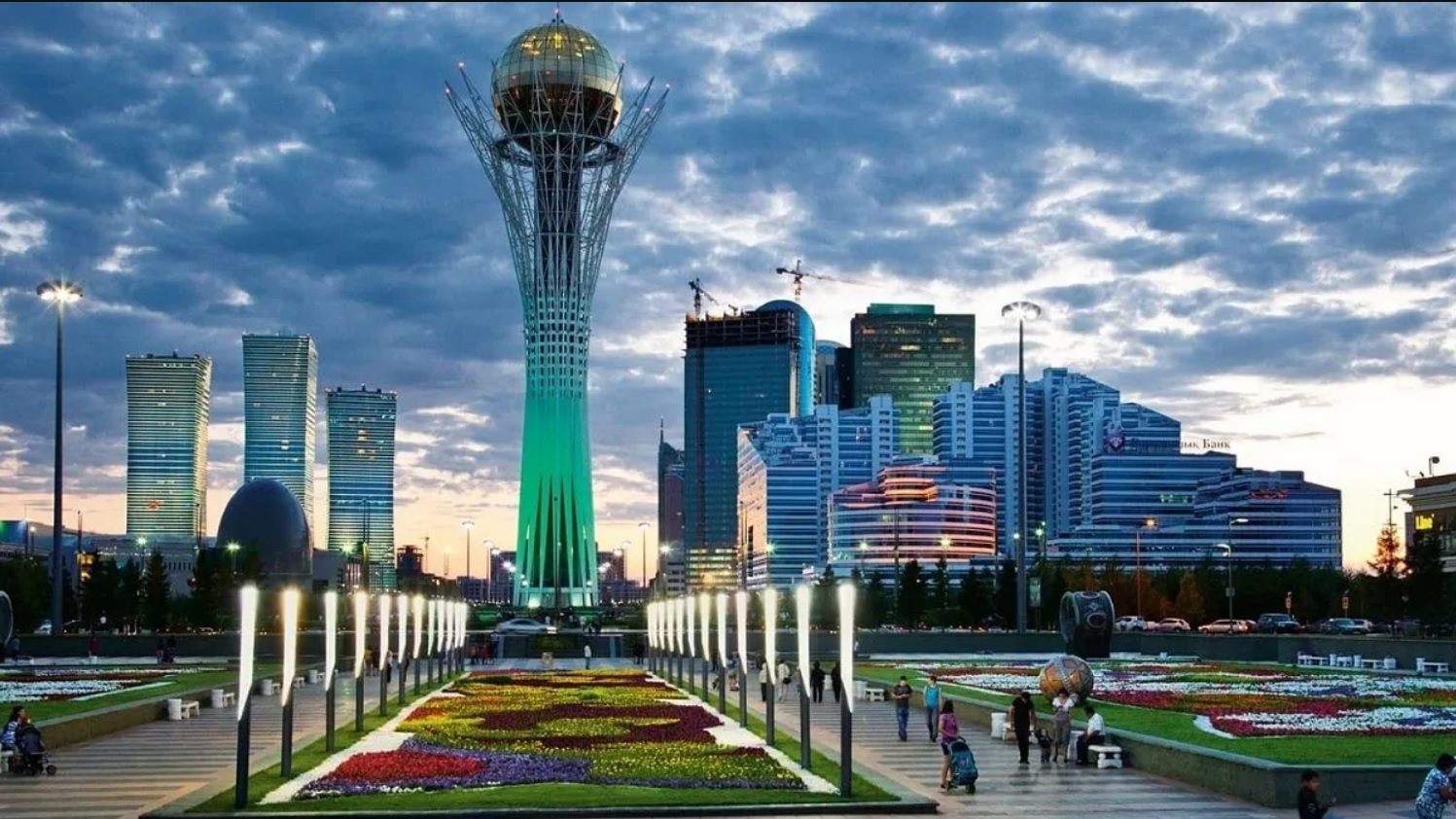Kazakhstan: A Tapestry of Architectural Elegance, Natural Beauty, and Spiritual Magnificence

Kazakhstan, a neighboring country of Pakistan, shares a common bond as an Islamic nation. Situated in Central Asia, Kazakhstan is renowned for its rich Islamic heritage and the influence of Islamic culture in its society.
Kazakhstan, like Pakistan, has a deep respect and reverence for Islamic traditions. Mosques are prominent features of Kazakh cities and towns, serving as places of worship, community gathering, and centers for Islamic education. Kazakhstan beckons travelers with its enchanting blend of architectural grandeur, awe-inspiring landscapes, and spiritual allure. This land of vast expanses and cultural treasures has become a magnet for tourists seeking a unique and unforgettable experience.
Kazakhstan boasts an impressive array of architectural marvels that showcase the country’s rich history and cultural heritage. The capital city, Nur-Sultan, stands as a testament to Kazakhstan’s ambition and vision. Its skyline, adorned with modern skyscrapers, presents a harmonious blend of contemporary designs and traditional influences.
The Bayterek Tower, an iconic symbol of Nur-Sultan, captivates visitors with its soaring height and distinctive design. Representing the mythical Tree of Life, the tower offers panoramic views of the city, inviting travelers to marvel at the architectural tapestry below.
The Nur-Astana is a mosque in Astana, Kazakhstan. It is third largest mosque in Central Asia.
Kazakhstan is also a land of religious significance, with awe-inspiring sites that captivate spiritual seekers. The Mausoleum of Khoja Ahmed Yasawi, a UNESCO World Heritage site, is a testament to the country’s historical and religious importance. Nestled within the enchanting Turkistan Province of Kazakhstan, the Mausoleum Arystan-Bab stands as one of the holiest places in the region. This humble yet revered structure, designed in a traditional Islamic style, exudes a sense of serenity and spiritual significance that captivates visitors from near and far.
Originally constructed in the 12th century, the Mausoleum Arystan-Bab has weathered the test of time, albeit not without its fair share of challenges. Throughout history natural disasters, such as earthquakes, have left their mark on this sacred site, leading to its destruction and subsequent restoration multiple times.
The mausoleum presents itself as a magnificent building, adorned in hues ranging from brown to soil-colored tones. Its architectural design adheres to the traditional Islamic style, reflecting the cultural heritage of the region. Two elegantly domed structures grace the mausoleum, symbolizing the spiritual sanctity that lies within. These domes, coupled with two minarets that touch the edges of the building, create an impressive silhouette against the sky, evoking a sense of reverence and awe.
Nestled amidst the breathtaking cityscape of Nur-Sultan, the Sultan Mosque stands as a serene jewel that exudes spiritual tranquility and architectural splendor. This majestic sanctuary, enveloped by the picturesque surroundings of Kazakhstan’s capital, beckons visitors from near and far to immerse themselves in its sacred embrace.
The history of Sultan Mosque traces back to its humble beginnings, embodying the rich Islamic heritage that resonates within the hearts of the Kazakh people. Originally established as a modest place of worship, the mosque has undergone several renovations and expansions, transforming it into the architectural masterpiece it is today. Its evolution mirrors the growth and vibrancy of Nur-Sultan itself, symbolizing the unity and devotion of its Muslim community.
As one approaches the Sultan Mosque, the eyes are immediately drawn to its elegant silhouette, adorned with soaring minarets and grand domes that seem to reach towards the heavens. These architectural elements stand as testaments to the spiritual aspirations and artistic craftsmanship of the Kazakh people. Intricate details and geometric patterns grace the exterior, reflecting the timeless beauty of Islamic architecture.
The Sultan Mosque not only serves as a place of worship but also as a hub of communal life and cultural exchange. It echoes with the collective prayers and heartfelt supplications of the faithful, fostering a sense of unity and spiritual connection. The mosque becomes a haven where individuals from diverse backgrounds gather, transcending barriers and embracing the shared bond of faith.
Beyond its religious significance, the Sultan Mosque offers a glimpse into the vibrant tapestry of Nur-Sultan’s cultural fabric. It stands as a proud testament to the city’s commitment to architectural beauty and the preservation of its Islamic heritage. The surrounding area showcases the dynamic growth and modernization of the capital city, creating a harmonious juxtaposition of tradition and progress.
Designed by renowned architect Norman Foster, the Palace of Peace and Harmony embodies the spirit of unity and inclusivity. Its unique spherical shape represents the eternal cycle of life and reflects Kazakhstan’s aspiration for lasting peace. The architecture seamlessly blends modern elements with timeless symbolism, creating a harmonious fusion of tradition and innovation.
One of the most captivating features of the Palace is its stained glass windows, which depict a kaleidoscope of religious symbols and motifs from around the world. These vibrant windows illuminate the interior, casting a radiant glow and captivating the senses. Each panel tells a story, reflecting the spiritual traditions and beliefs of different cultures, inviting visitors to contemplate the beauty of diversity.
The Palace of Peace and Harmony serves not only as a visual feast but also as a space for dialogue, understanding, and cooperation among different faiths. It hosts conferences, meetings, and events that foster interfaith discussions, aiming to build bridges of understanding and forge a path towards mutual respect and peaceful coexistence.
As Kazakhstan’s beacon of interfaith understanding and harmony, the Palace of Peace and Harmony stands as a shining example of the nation’s commitment to promoting a world free from religious divisions and conflicts. It calls upon visitors to embrace the beauty of diverse spiritual traditions and to work towards a shared vision of peace and harmony for all humanity.




